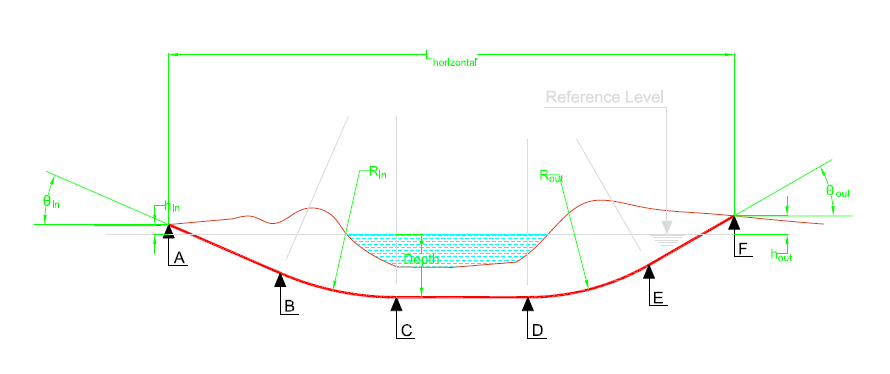The explanation of HDD represents the Key Development of Placing Utilities

In an era where urbanization is rapidly advancing and infrastructure requirements are becoming increasingly complex, traditional methods of placing utilities are being challenged. HDD, often known Have a peek at this website , is emerging as a transformative solution in the installation of utilities landscape. This groundbreaking technique enables the seamless placement of pipes and cables underground with minimal disruption to the surrounding environment, making it an excellent choice for many construction projects.
As we delve into the world of HDD, we will explore its core principles, benefits over traditional trenching methods, and its critical role in modern utility infrastructure. From enhancing project efficiency to minimizing harm to the environment, HDD is not just a trend but a critical evolution in how we approach underground utility placement. Join us as we investigate why HDD is the next step of installing utilities and how it is changing industries from telecommunications to sustainable energy.
Comprehending Horizontal Directional Boring
Horizontal Aligned Boring, commonly known as Horizontal Directional Drilling, is a trenchless technique used for installing subsurface services such as water, wastewater, gas, and communication lines. This process consists of drilling a pilot hole following a designated path, that is then widened to fit the utility being placed. HDD is particularly beneficial in difficult environments, like urban areas, where conventional trenching would cause major disruption to current infrastructure, roadways, and surroundings.
The key to HDD's effectiveness lies in its ability to reduce surface impact and offering precise control of the boring path. Using advanced technology, operators can navigate through various soil conditions, making sure that the installation meets the given design without negatively impacting surrounding structures. The procedure begins with drilling a pilot hole, followed by reaming out the hole to the necessary diameter and finally pulling the utility through the enlarged bore. This approach not only conserves the quality of the surface but also expedites the installation.

In addition to to its efficiency, HDD is noted for its ability to lessen ecological impact. By preventing open trenches, HDD reduces earth erosion, water pollution risks, and disruption to local ecosystems. This method is more and more seen as a preferred solution in delicate areas, like adjacent to rivers and ecologically protected zones, where conventional methods could pose serious risks. As urban infrastructure needs grow and environmental factors become more important, HDD is set to play a significant role in the future of utility installation.
Advantages and Ecological Consequences of Horizontal Directional Drilling
HDD offers a variety of benefits versus conventional excavation methods, primarily due to its trenchless nature. Through the process of drilling horizontally below the surface, HDD reduces surface disturbance, not only does it accelerate the construction process and also diminishes the impact on pre-existing environments, highways, and infrastructure. This effectiveness translates to reduced workforce expenses and compressed project timelines, making HDD an appealing option for utility installations. Furthermore, the reduced need for extensive digging means that recovery efforts are easier and more cost-effective.
The ecological advantages of HDD are considerable, particularly in sensitive areas. Conventional excavation can lead to significant ecological disturbances, including erosion of soil, habitat destruction, and increased runoff. In comparison, HDD's minimal surface disturbance helps protect natural habitats, waterways, and the integrity of the soil. By avoiding exposed ditches, HDD also reduces the chance for sediment movement and pollution, making it a favored choice for undertakings near waterways, swamps, and cities where preserving current ecological systems is critical.
Additionally, the progress in HDD tech have enabled improved strategizing and execution of drilling projects, further improving its environmental friendliness. Thanks to improved global positioning system and monitoring systems, operators can accurately maneuver complex landforms and avoid impediments, ensuring a reduced environmental impact. The ability to carefully assess and adjust to different subsurface conditions also minimizes minimizing risks such as inadvertent returns or sudden eruptions. As https://brassfall0.werite.net/horizontal-directional-drilling-a-game-changer-for-infrastructure focuses on green practices, HDD is distinguished as a leading method for achieving eco-friendly infrastructure installation solutions.
Future Developments and Innovations in HDD
As the demand for effective infrastructure placement continues to grow, advancements in Horizontal Directional Drilling (HDD) are growing more important. One of the main developments is the adoption of advanced technologies such as GPS and live monitoring systems. These technologies improve accuracy and allow for greater tracking during the drilling process, reducing the risk of mistakes and improving overall project efficiency. Upcoming advancements are likely to focus on additional refining these systems, providing operators with even greater precision in difficult environments.
Another notable development is the increasing embrace of environmentally friendly practices within HDD projects. As eco-friendliness turns into a priority across sectors, HDD is transforming to include biodegradable drilling fluids and enhanced methods for reducing surface disruption. These innovations not only lessen ecological impact but also tackle concerns related to regulation and community support, positioning HDD as a more viable option for vulnerable areas and urban infrastructure projects.
Finally, advancements in equipment design and capabilities will play a crucial role in the coming times of HDD. New drill rigs and tools are being created to handle challenging geological conditions, such as drilling through rock or traversing complex terrain. These enhancements will expand the applications of HDD, making it a popular choice for multiple utility installations, including renewable energy infrastructure. As Horizontal Directional Drilling Bangor Northern Ireland progresses, HDD will certainly remain at the forefront of trenchless technology, shaping the next phase of utility placement.
